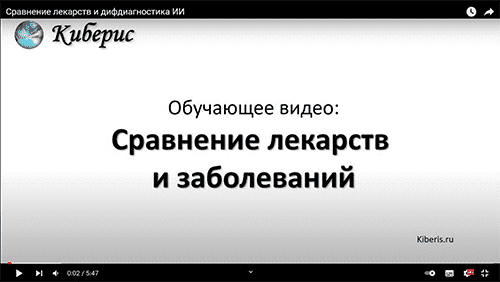Distinctive symptoms
Register , to see more distinctive signs of diseases and studies100% 17%
Register , to see more distinctive signs of diseases and studies— 45%
dystrophy
78%
—
werdnig-hoffman amyotrophy —
35%
myopathy
91%
16%
it is better from massage —
29%
progressive duchenne muscular dystrophy
70%
—
damage to the nervous system —
27%
sweating legs
66%
—
fasciculations —
27%
paralysis
83%
15%
sensitive ataxia —
26%
smell of sweat unpleasant
64%
—
tremor —
26%
cold legs
60%
—
russi-levy syndrome —
24%
muscle weakness
90%
29%
worried about everything —
23%
sweating is increased
37%
—
hypotension with hypotrophy —
23%
duck gait
47%
9%
better sitting —
22%
increase in creatine kinase
44%
8%
amyotrophic lateral sclerosis —
22%
increased potassium
29%
—
shape of body is deformed —
22%
likes to act
29%
—
personage-turner syndrome —
21%
dilated cardiomyopathy
38%
8%
hoffmann 's perifolliculitis —
21%
spinal fracture
28%
—
tremor at rest —
20%
shortening of legs
28%
—
sputum —
20%
hypertrophic cardiomyopathy
26%
—
tremor of the hands —
20%
delayed puberty
25%
—
weakness in the wrists —
20%
restrictive cardiomyopathy
25%
—
joint diseases —
20%
speech slurred
34%
8%
charcot-marie-tut neural amyotrophy —
19%
children's speech
23%
—
nervousness —
19%
problems with studying
23%
—
ataxia —
19%
heart failure
32%
8%
can not recover —
18%
knee reflex negative
22%
—
kyphosis scoliosis —
18%
hypotrophy in children
22%
—
myelopathy —
18%
there is heart failure
32%
8%
tremor of the hands and tongue —
18%
fatigue in the legs
30%
7%
hump —
17%
cardiodilation
35%
12%
night work —
16%
cardiomyopathy
38%
15%
hypersalivation —
16%
weakness in the knees
21%
—
can't swallow —
16%
addison 's crisis
21%
—
sleeps during the day —
15%
increased ast
21%
—
impressionability —
15%
I'm being controlled
21%
—
vibration sickness —
15%
crumpy syndrome
21%
—
fasting —
15%
adrenal insufficiency
20%
—
deformities of the limbs —
15%
hormonal disorders
20%
—
perihepatitis —
15%
increased alt
20%
—
paranoia —
15%
stunting
19%
—
suspicion —
15%
rhabdomyolysis
19%
—
refsum 's disease —
15%
strongest weakness
19%
—
tongue trembles when sticking —
15%
spinal fracture in children
19%
—
f —
14%
hands and feet are warm
19%
—
joint pain —
14%
amplitude of q wave is lowered
19%
—
better from milk —
14%
amplitude of q wave is increased
19%
—
thoracic kyphosis —
14%
contracture
42%
21%
no pharyngeal reflex —
14%
hyperactive child
18%
—
sputum is scanty —
14%
diligent
18%
—
progressive bulbar paralysis —
14%
convulsions pain
18%
—
rooster walk —
14%
heart pain at night
18%
—
need a nap —
14%
pq interval duration is lowered
18%
—
patient experiencing no —
13%
activity at night
18%
—
from eating better —
13%
increased ldh
18%
—
is not deformed —
13%
muscle fatigue
32%
12%
hard to take a breath —
13%
duration of q wave is reduced
18%
—
hypoglycemia —
13%
autism
18%
—
joints unstable —
13%
impaired glucose tolerance
18%
—
drowsiness during the day —
13%
loss of touch
18%
—
friedreich 's familial ataxia —
13%
spasm
18%
—
numbness of the feet —
13%
cataract senile
18%
—
protein with increased —
13%
delayed speech development
18%
—
the desire to sleep during the day —
13%
convulsions
18%
—
weakness of the fingers —
13%
in the morning listlessness
17%
—
can not stand on his feet —
13%
pronounced tachycardia
17%
—
vomiting —
13%
weakness of the neck muscles
17%
—
difficulty breathing —
13%
by a short sleep improves
17%
—
neuritis —
13%
avf
17%
—
left-sided symptoms —
13%
walks on socks
17%
—
neuralgia —
13%
complications of narcosis
17%
—
chokes from coughing —
13%
duration of q wave is increased
17%
—
weakness with trembling —
13%
destructive behavior
17%
—
drowsiness —
13%
contracture of the lower jaw
17%
—
pelvis is skewed to the left —
12%
acute expansion of the heart
17%
—
observation skills —
12%
necrosis
17%
—
polyneuropathy —
12%
spinal injury
25%
7%
kugelberg-velander amyotrophy —
12%
a history of endoscopic surgery
16%
—
ARVI —
12%
hyperactive
16%
—
cold weakness —
12%
palpitations
16%
—
numbness of fingers —
12%
weakness in the heart
16%
—
tension in the shoulders —
12%
tachycardia
16%
—
angular hump —
12%
weakness in the arms and legs
26%
8%
cough wet —
12%
obsessive neurosis in children
16%
—
paretic gait —
12%
history medical mother's
16%
—
drowsiness in the morning —
12%
chronic respiratory failure
16%
—
stiffness in the shoulders —
12%
stiffness of fingers
16%
—
numbness of the hands —
12%
obsessive movement syndrome in children
16%
—
contracture of the hands —
12%
juvenile osteoporosis
16%
—
shortness of breath constant —
12%
duration of pq interval is increased
16%
—
pain in the legs of children —
12%
stiffness in the lower back
16%
—
metabolic myopathy —
12%
elongated arms
16%
—
pelvis is skewed to the right —
12%
kidney diseases
16%
—
food gets stuck in the throat —
12%
heart hypertrophy
31%
13%
desire to dominate —
12%
skew of blades
15%
—
hoarseness voice —
12%
dysarthria in children
15%
—
impaired nervous system function —
12%
cramps in the legs
15%
—
saves movement —
12%
autism spectrum
15%
—
ketoacidosis —
11%
quickly gets tired
29%
12%
sleeps sitting —
11%
warm feet
15%
—
myotonia —
11%
blockage of blood vessels
15%
—
the volume of forced exhalation in the first second is reduced —
11%
forgetfulness
15%
—
fatigue from life —
11%
age 4 years
15%
—
tension in the legs —
11%

